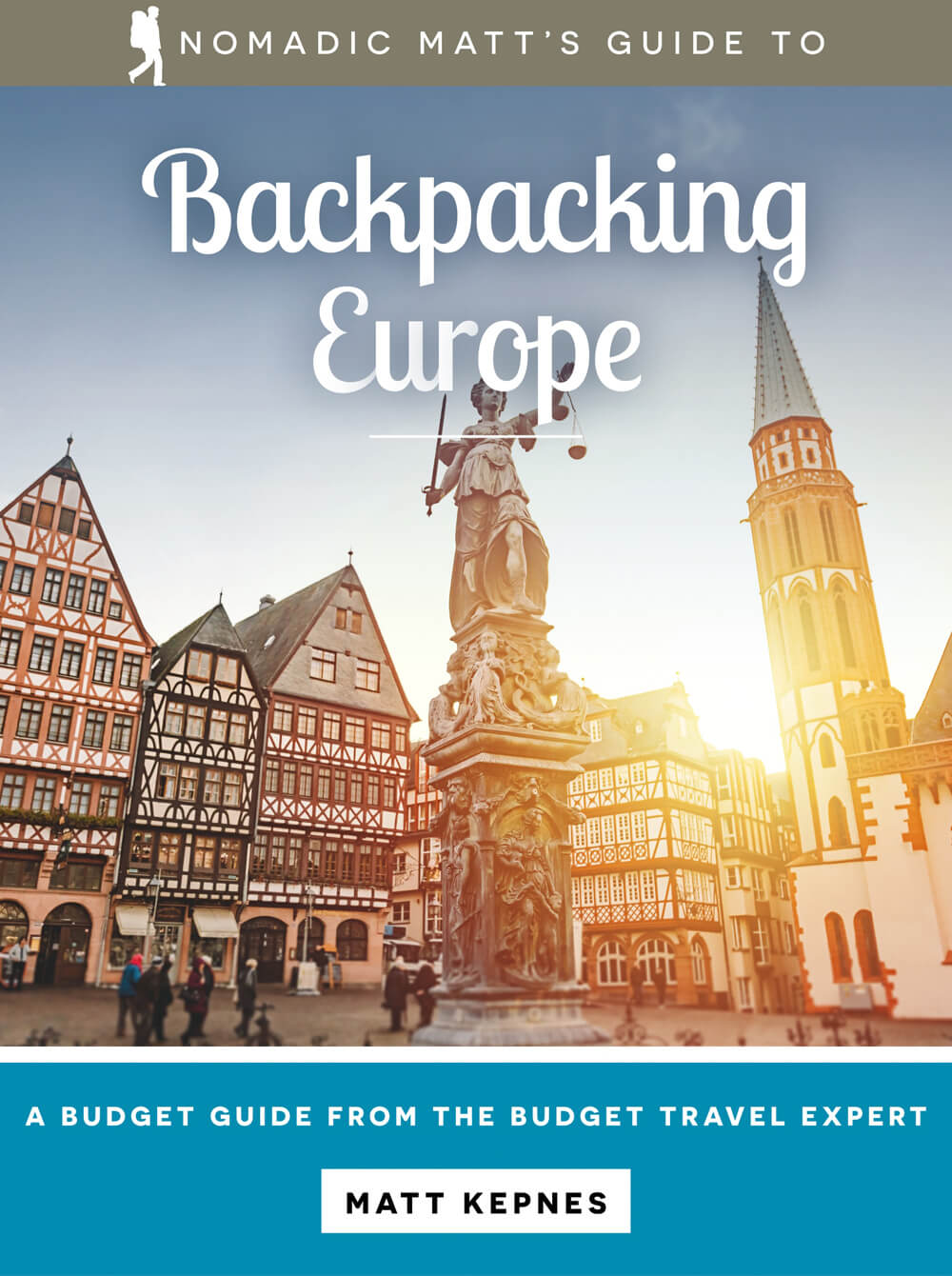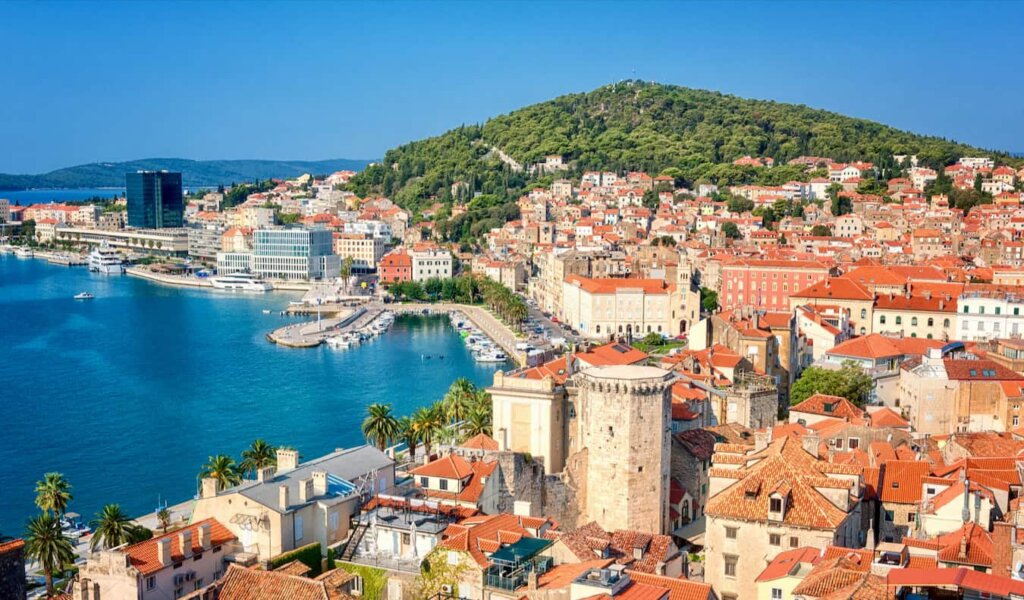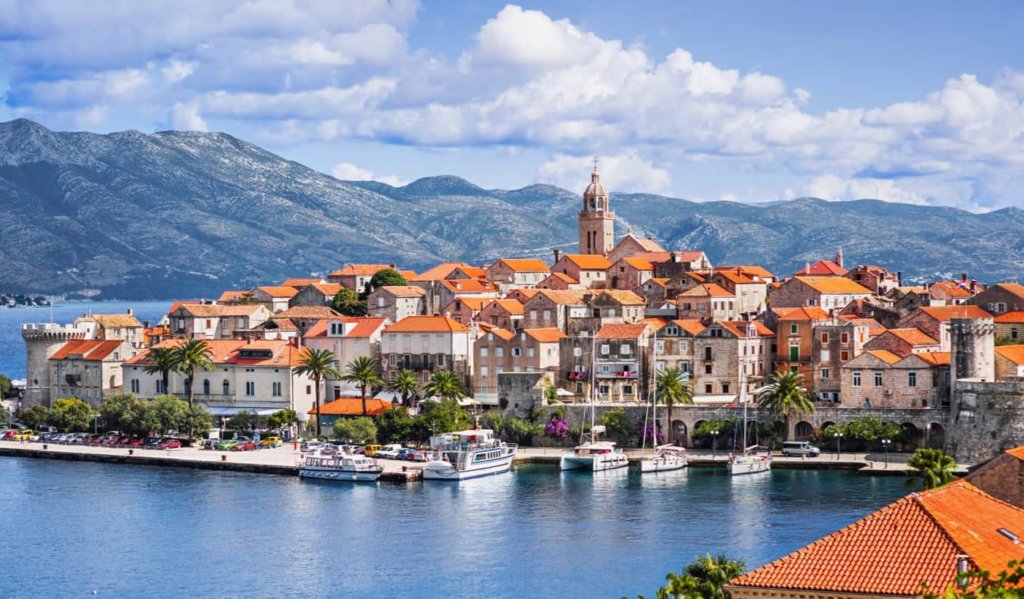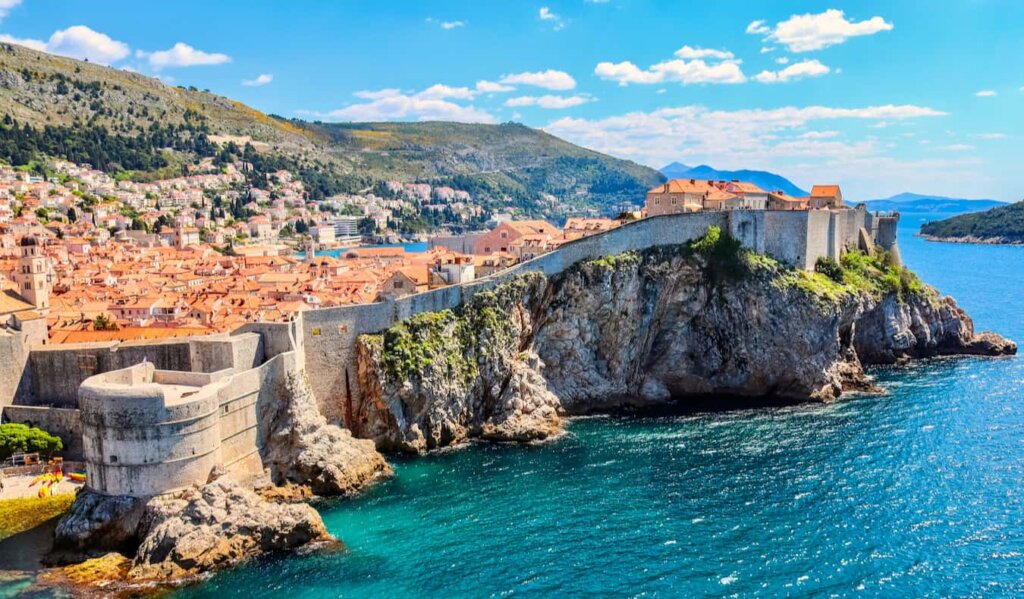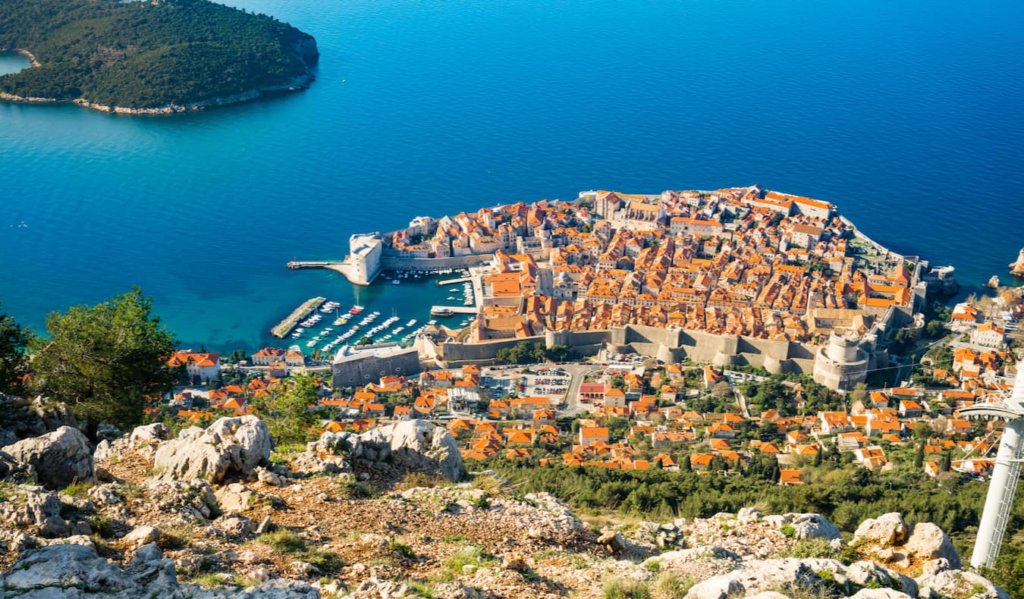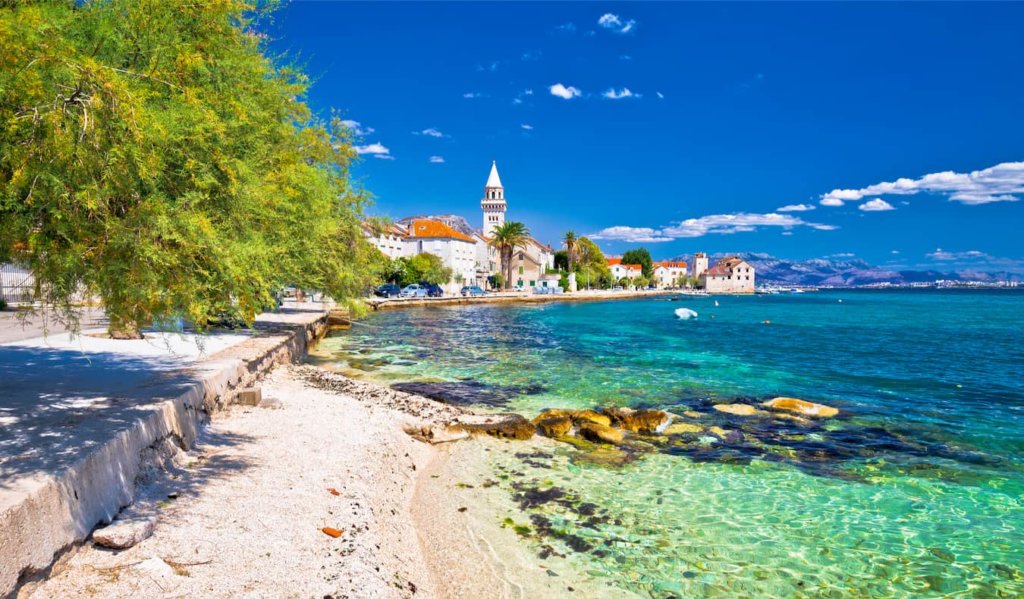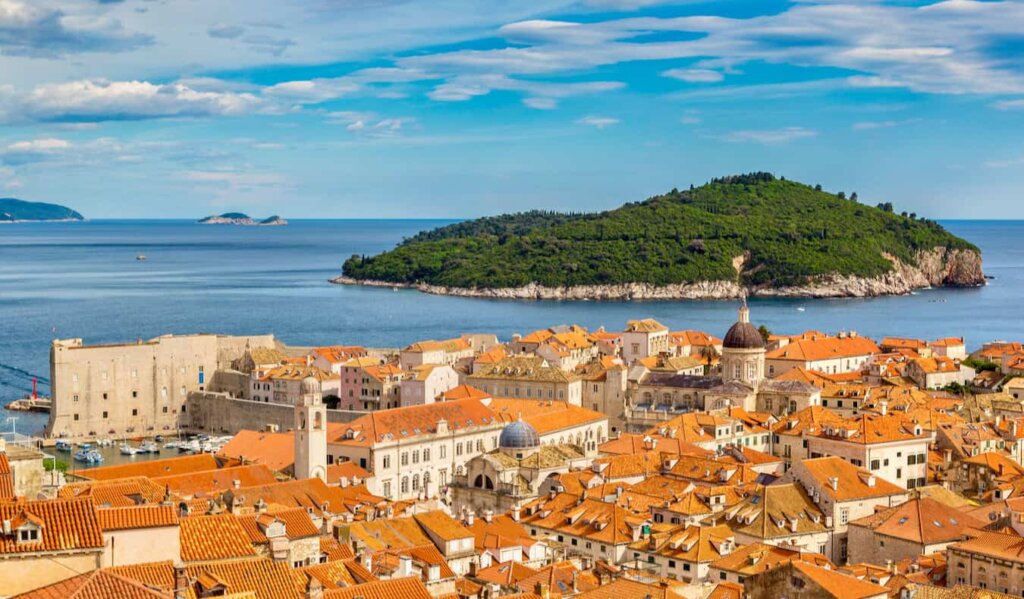Croatia Travel Guide
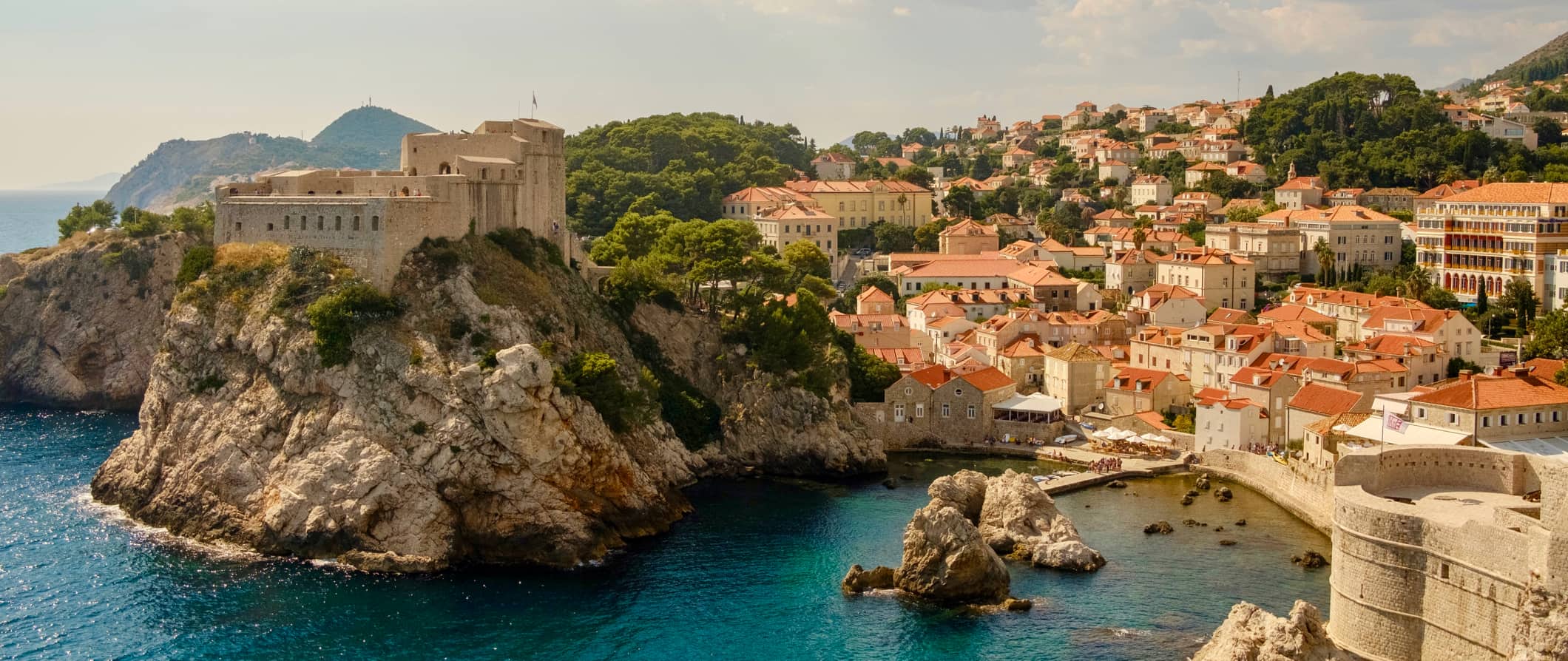
Croatia is one of the most popular destinations in Europe. It’s the go-to spot for stunning beaches, rugged islands, historic architecture, and all the sailing you could ask for.
I think the country is vastly underappreciated.
The tourism focus in the country is usually Hvar, Split, Dubrovnik, Istria, or the famed Plitvice Lakes. Too much of the rest of the country is largely ignored. I saw so few tourists in Karlovac, Rastoke, or Slunj. Zagreb didn’t have a lot either, despite it being the capital city. Slavonia? Barely a soul goes there.
Once you get off the main stretch of the coast, it feels like you have the country to yourself. Croatia is a country with over a thousand islands, a long coastline dotted with sun-bleached medieval towns, a cosmopolitan capital city, an underappreciated wine region, and an untrammeled inland landscape that sees a fraction of the tourists that the Dalmatian Coast brings in.
Spend longer than you plan and get off the beaten path to really see the magic of the country.
This travel guide to Croatia can give you the tips and tricks you need so you can plan the ultimate adventure there.
Click Here for City Guides
Top 5 Things to See and Do in Croatia
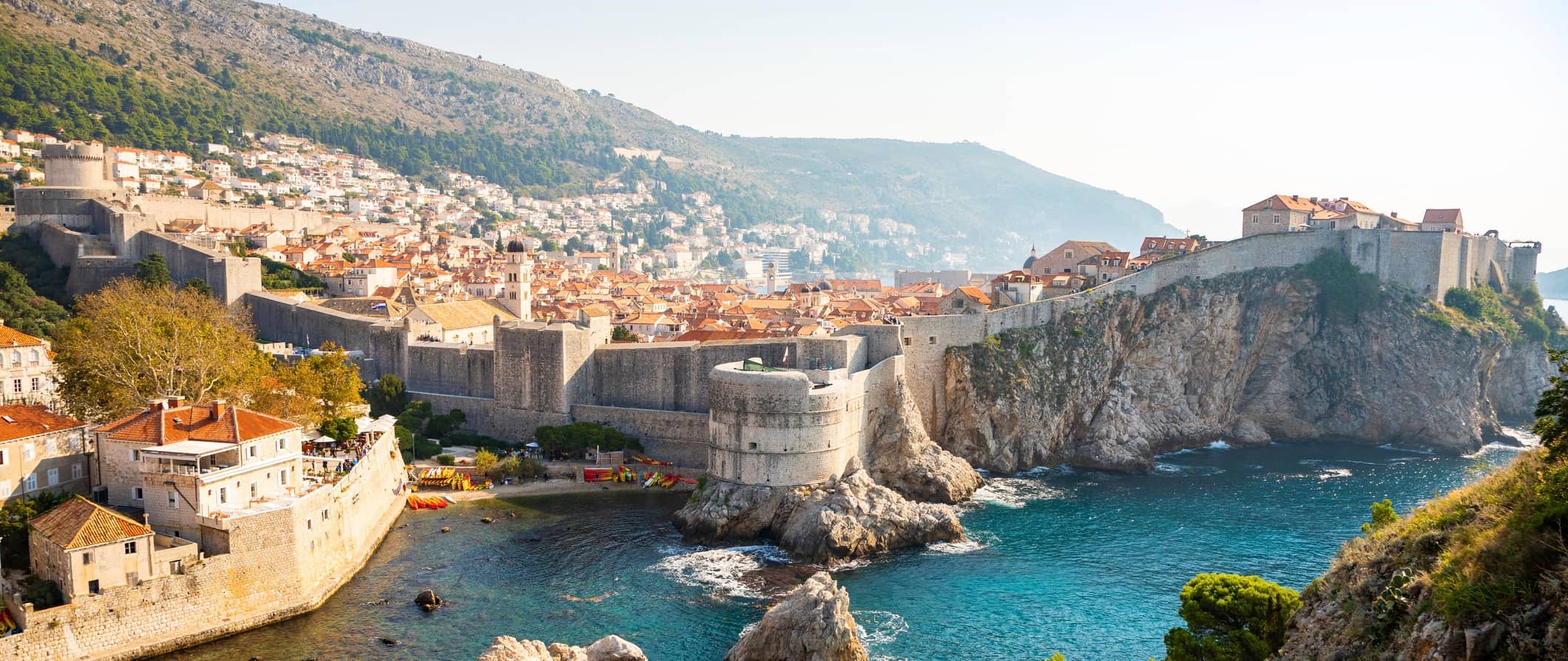
1. Visit Dubrovnik
Dubrovnik is a stunning city best known for its historic Old Town (which was a Game of Thrones filming location). Wander around its limestone streets, admire the baroque buildings, and take in the views of the Adriatic Sea. A walk along the medieval city walls is a wonderful way to spend an afternoon (bring sunscreen as there is very little shade). There are a lot of interesting museums worth visiting, like the Cultural History Museum, the Red History Museum, and the Maritime History Museum. Don’t miss St. Blaise Church and Sponza Palace either. The city also makes for an excellent base for day trips, including jaunts into nearby Bosnia and Herzegovina and Montenegro. There are lots of wineries nearby too.
2. See Split
Split has some of the best beaches in the country, like Kašjuni Beach. It’s also home to Roman Emperor Diocletian’s 4th-century palace, which is a UNESCO World Heritage Site. There are plenty of museums to keep you entertained. I particularly enjoyed the Split City Museum, the Meštrovic Gallery, and Ethnographic Museum. Split also has a lively nightlife, several nearby hikes, historic ruins, cobblestone streets, and incredible seafood. It’s a more upscale (and party-focused) Dubrovnik. Be sure to spend a day in nearby Trogir, the most beautiful town you’ve probably never heard of.
3. Admire Plitvice Lakes National Park
Tucked between Zagreb and the Dalmatian Coast, Plitvice Lakes National Park is a UNESCO World Heritage Site. It’s composed of 16 interconnected lakes and over 90 waterfalls. There are opportunities for hiking, kayaking, and even winter activities. There are many miles worth of hiking trails, each offering a unique view of the waterfalls and surrounding forest. It’s beautiful but super popular so arrive early (it gets packed in the summer). Admission is 10-40 EUR depending on the month (prices rise in the summer) and time of day you visit.
4. Visit Rijeka
Rijeka is Croatia’s largest port and home to the medieval 13-century Trsat Castle as well as City Tower, a medieval defensive tower. The pedestrian street of Korzo is a wonderful place to enjoy the bustling city, both during the day and at night. The city has a lot of cool street art mixed in with cafes and even ancient ruins too. There’s also some amazing diving nearby with lots of underwater cliffs to explore. Don’t miss the nearby historic town of Kastav. It’s an Insta-worthy walled town surrounded by parks.
5. Explore Lokrum
The island of Lokrum is a nature reserve just off the coast of Dubrovnik. It makes a wonderful day trip (you’re not allowed to sleep here overnight) for swimming and sunbathing. There are also plenty of hiking trails, a botanical garden, and even a fortress built by soldiers during the Napoleonic era. For a unique experience, go floating in the salt water lake that’s often called a mini “Dead Sea” because of the high salt content. There are no cars here and, in addition to the beach, there is a former Benedictine monastery to explore. Ferry rides are only fifteen minutes and cost 14 EUR for a round trip and include admission to the island.
Other Things to See and Do in Croatia
1. Visit Pula
Pula is a seaside city and home to an impressive 1st-century Roman amphitheater that overlooks the harbor that is used to hold concerts, film festivals, and even a summer festival dedicated to all things Roman. The festival, Spectacular Antiqva, is held at least once per week during the summer. Admission is 20 EUR. While you’re in Pula, be sure to visit the Archeology Museum and spend some time exploring Brijuni National Park (which is made up of a group of scenic islands). There’s also a 14th-century monastery here you can visit as well.
2. Go Island Hopping
With over 1,000 islands, it would be silly to travel to Croatia and not go island hopping. Plan to stay at least a couple of days on one of the islands to step back in time and get the full Croatian experience. The most popular islands to visit are Brac, Hvar, Krk, Cres, and Lošinj. However, don’t be afraid to get off the beaten path and explore some of the lesser-known islands such as Silba, Vis, and Lastovo. Some of the islands have ferries that start at 2.50 EUR each way. There are many ferry companies operating in Croatia leaving from the main ports of Pula, Porec, Rovinj, Split, Dubrovnik, Zadar, Mali Losinj, Umag, and Novalja.
3. See St. James’ Cathedral
Located in Sibenik (which is on the coast between Zadar and Split), St. James is believed to be the world’s largest church built entirely of stone (there are no wooden or brick supports). It’s an architectural masterpiece that was started in 1431 and wasn’t completed until 1536. It’s massive and spacious with a rather dark and grim stone interior that feels very medieval. Some of the cathedral’s highlights are its frieze of 71 heads on the exterior walls, the tomb of Bishop Sizigori, and a 15th-century Gothic crucifix. Admission is 3 EUR.
4. Visit Krka Monastery
This Serbian Orthodox monastery is dedicated to the Archangel Michael and is one of the most important religious sites in Croatia. Founded in 1345, it’s located beside a small and peaceful lake forty-five minutes from Sibenik. Built in the Romanesque style, it boasts a unique mix of Byzantine and Mediterranean architecture. Underneath the building is a natural cave system (known locally as the ‘secret church’) where they have found Christian symbols dating back to the 1st century. The library also has books dating back to the 16th century. Admission is free.
5. Go diving
Thanks to Croatia’s seafaring history, the whole of the coastline is littered with shipwrecks. Two of the most popular are Baron Gautsch (off the coast of Rovinj), and Taranto (off the coast of Dubrovnik). Expect to pay 38 EUR for a single-tank dive in the area but the shipwrecks start at around 64 EUR. Open water certification costs around 315 EUR. The best diving conditions are between May and November (September and October will be warm and less busy).
6. Visit the Museum of Broken Relationships
Located in Zagreb, this museum is full of mementos from failed relationships between family members, friends, and lovers. Items on display include clothing, jewelry, handwritten letters, photos, and more quirky items like belly button lint and old chocolate bars. Each item has a story attached to it, some funny, some gut-wrenching. The museum offers an honest, unpretentious look at humanity through its failed relationships. Admission is 7 EUR.
7. Explore the Vucedol Culture Museum
This riverside location is home to an archeological dig site where remains from over 8,000 years ago were found. The museum, built on top of the site, is a state-of-the-art representation of the original settlement complete with replica houses. It showcases the culture that was here, which was one of the first in Europe to create calendars and brew beer. It’s super informative. Guided tours cost 150 HRK and are available in English. Admission is 6 EUR.
8. Go hiking
From coastal walks to mountain climbing to hiking the inland canyons, hills, and forests, Croatia has a lot to offer. The most popular coastal hiking spot is Mljet National Park, on the island of Mljet. Inland, the most popular hiking spot is Medvednica Mountain near Zagreb or in Risnjak National Park. Other spots worth visiting are Brijuni National Park (which is home to 14 different islands), Krka National Park (which has beautiful waterfalls), and Paklenica (which has some rugged canyon trails).
9. Visit the Blue Cave of Bisevo
The Blue Cave (or Blue Grotto) is a natural sea cave accessible only by boat via a narrow passageway. Inside, the water almost glows and has a bright otherworldly color to it. Access to the cave is restricted to one boat at a time. The cave itself is located at Balun Cove on the eastern side of Komiza. The best time to visit is between 11am-12pm as this is when the light is at its most beautiful. Prices in the off-season are 9.50 EUR and while it’s 13.50 EUR in the high season. Expect to pay around 75 EUR for a full-day tour (and expect crowds).
10. Listen to the Sea Organ
The Sea Organ is tucked away beneath a set of steps that lead down to the water in the seaside town of Zadar. The organ consists of 35 tubes that stretch along 70 meters (230 feet) and are played by the wind and the sea. Designed by architect Nikola Basic, the music sounds similar to whale calls. It opened in 2002 and is now one of the most popular attractions in Zadar. Because the sea is constantly changing, the music sounds different every day. Come here at sunset to soak in the picturesque views and listen to the captivating sounds of the sea.
11. Go sailing
Croatia is one of the world’s best sailing destinations. With calm winds, short distances, and a coastline dotted by islands and historical sites, it really does make for a inspiring place to explore by sea. During the high season, prices rise dramatically, but if you time your visit right and visit during the shoulder season you can find some good deals. If you don’t want to join a tour you can charter a boat. Charters can get pricey though, as a 7-day trip starts at 1,700-2,000 EUR. If you’re in the mood for partying, Busabout has hop-on-hop-off boat tours. I did one a few years ago (you can read about it here). For a 7- or 8-day trip, expect to pay around 1,000 EUR.
12. Tour Zagreb
Zagreb has a charming Old Town reminiscent of cities like Prague and Budapest. There is lots of green space, a couple of nearby lakes, and tons of historic architecture. Be sure to visit the massive Neo-Gothic cathedral and the medieval Old Town Gate where you can find an 18th-century painting of the Virgin Mary thought to be miraculous as it survived the city’s Great Fire of 1731. There are also tons of museums (don’t miss the Mimara Museum) as well as the Medvedgrad fortress that overlooks the city. To see the highlights on a budget, take a free walking tour with Free Tour Zagreb. Their tours last two hours and cover all the main sites so you can learn more about this underrated city.
13. Experience The Yacht Week
If you want to splash out and spend a week partying on a yacht, check out The Yacht Week. They host week-long parties and festivals with DJs and events throughout the summer. You can book a full boat to share with friends or just a cabin on one if you’re traveling solo. They have destinations all around the world, including routes in Croatia. “Yacht Weeks” occur from May-August. Prices start at 685 EUR per person. It’s one of the biggest things of the summer and it’s a wild, wild, WILD party.
14. Visit Hvar
Hvar is a picturesque island off the coast of Split that’s known for its lively nightlife. It’s popular with younger travelers looking to dance and drink the night away. However, there are also lots of scenic coves, lavender fields, vineyards, and secluded beaches you can enjoy if you visit during the day. While a lot of people come here as part of their sailing trips (or as a day trip from Split), I recommend spending a couple of nights here. It’s one of the best places in the country. It’s also the sunniest, with over 274 days of sunshine each year.
15. Explore Slavonia
Few tourists make it to Slavonia, a rural region in eastern Croatia famous for its wine production. Head to the wine-country town of Zmajevac (pronounced “zma-ye-vatz”), which is just a few miles from the border with Hungary and Serbia. Be sure to sample the local wines and try fish paprikash, a paprika-laden fish stew slow-cooked over an open flame for hours that’s a specialty of the region. Additionally, don’t miss Osijek, the main town of Slavonia. It has a large historic center filled with Gothic buildings and cobblestone streets.
16. Eat oysters in Mali Ston
If you love oysters like I do, head an hour’s drive up the coast from Dubrovnik to Mali Ston. Founded in the 14th century, the region was originally home to a defensive fortification. Today, it’s famous for the oysters that are farmed in Mali Ston Bay. These oysters are so unique that they’ve been given a Protected Designation of Origin status. They say it’s the unique mix of salt and fresh water in the bay that give these shellfish their quality flavor. Visit nearby farms to learn about the oyster industry and try some samples. Expect to pay at least 40 EUR per person for a guided oyster tour (with samples).
17. Relax in karlovac
Home to around 55,000 people, Karlovac is an off-the-radar city just one hour from Zagreb. It was originally built by the Austrians in the 16th century, though not much remains from that period. The city’s “castle” is really just a small fort that’s been rebuilt — but it’s worth a quick look as you meander around town. The main draw here is the brewery, Karlovacko. It makes one of the most popular beers in Croatia. Spend a night here and take in the local pace of life. There’s also some hiking and nearby waterfalls if you want to get out and stretch your legs.
18. Road trip around Istria
Istria is a peninsula home to delicious wines and sumptuous white truffles. It’s a foodie paradise that sees few tourists, perfect for road-tripping travelers. Rovinj is the best-preserved and most popular city on the peninsula. It has a stunning Old Town, plentiful beaches, and numerous ruins. Visit the Heritage Museum to learn about the region’s history and then enjoy the exquisite beaches (Monte, Lone Bay, and Amarin) that are perfect for swimming and lounging. Pula, mentioned above, can also be found here.
19. Go truffle hunting
Istria is a major truffle producer and you can go on a truffle tour while you’re here. The Motovun Forest is one of the most well-known areas for truffles in the world. Guides use expertly trained truffle-hunting dogs to find these rare fungi that grow underground. Prodan Tartufi, a family-run truffle-hunting business near the medieval hill town of Buzet, runs a popular (but pricey) excursion. Tarandek Truffle Hunting organizes more affordable, small-group truffle experiences for around 50 EUR per person (they get less expensive the more people are in the group).
For more information on specific cities in Croatia, check out these guides:
How to Stay Safe in Croatia
Croatia is a safe country to visit. Violent crime against tourists is rare. Pickpocketing and theft can occur in busy areas in Zagreb and Dubrovnik so be sure to keep an eye on your belongings (especially while on crowded public transportation or at a bus station).
Croatia’s bars and nightclubs are known for overcharging so be vigilant and check your bill before paying. It is also important to watch your drink and never leave it unattended. Drink spiking has been known to happen at nightclubs in Zagreb, Zadar, Split, and Dubrovnik. It’s rare, but it never hurts to be extra careful.
Solo female travelers should generally feel safe in Croatia. However, the standard precautions apply (never walk home alone at night intoxicated, don’t accept drinks from strangers, etc.), especially in the party towns. For specific information about a place, read one of the many helpful solo female travel blogs on the web. They can give you tips and advice that I can’t.
While out hiking take care not to wander far off the beaten path as there are still some regions in Croatia with unexploded landmines. If in doubt, ask locals for advice or hire an experienced guide.
Scams here are rare butt you can read about common travel scams to avoid in this blog post.
If you experience an emergency and require assistance, dial 112.
Always trust your gut instinct. Make copies of your personal documents, including your passport and ID.
The most important piece of advice I can offer is to purchase quality travel insurance. Travel insurance will protect you against illness, injury, theft, and cancellations. It’s comprehensive protection in case anything goes wrong. I never go on a trip without it as I’ve had to use it many times in the past. You can use the widget below to find the policy right for you:
Where to Stay in Croatia
During the high season, hostels book up fast so be sure to book in advance, especially on the coast so be sure to book in advance if you’re coming during peak season. Here are some of my favorite places to stay in Croatia:
- Hostel Dubrovnik Marine (Dubrovnik)
- Falling Lakes Hostel (Plitvice Lakes)
- Crazy House Hostel Pula (Pula)
- Kamena Lodge (Split)
- Boutique Hostel Forum (Zadar)
- The Dot’s Hostel (Zagreb)
For more information on places to stay, these articles include my top recommendations for the best hostels in Split, the best hostels in Dubrovnik, and excellent hotels in Dubrovnik.
Croatia Travel Costs
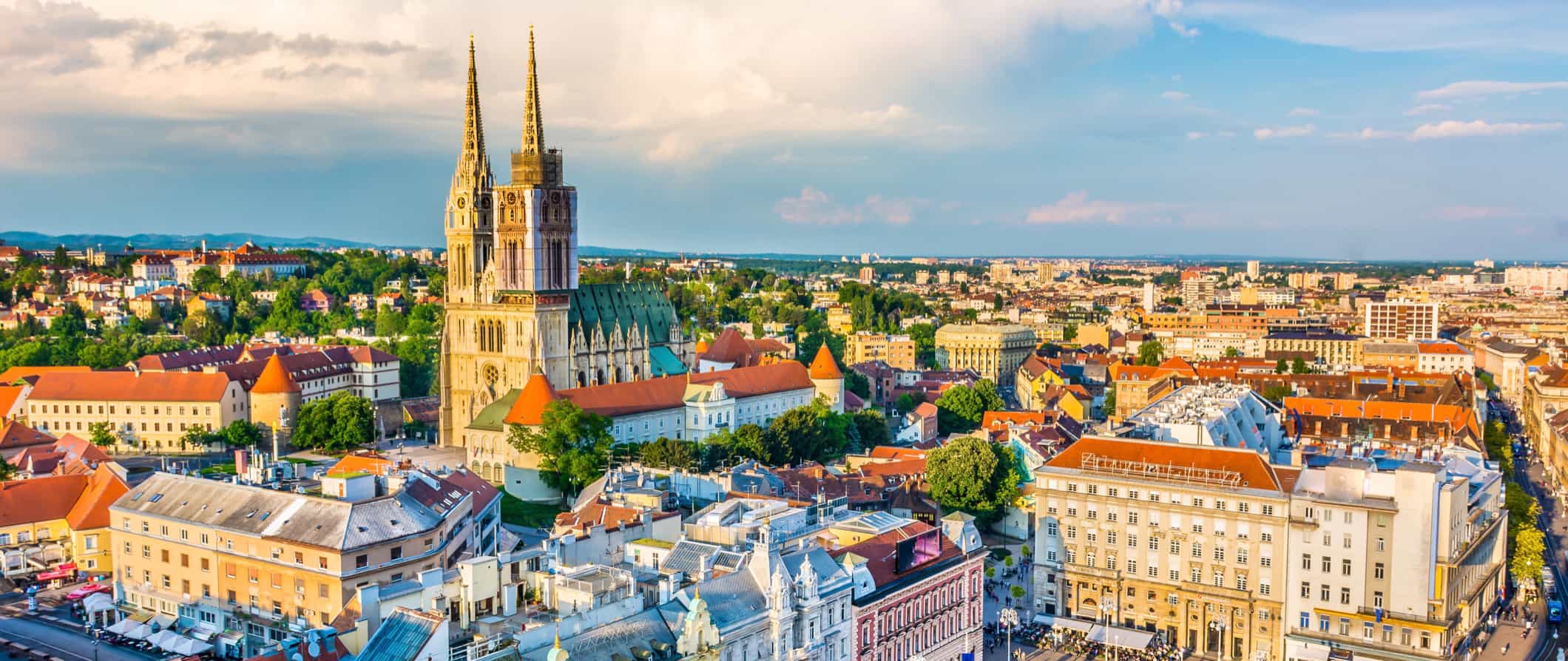
Accommodation
- Hostel dorms – 20 EUR per night
- Hostel private rooms – 37-80 EUR per night
- Budget hotels – 45-75 EUR per night
- Airbnb private rooms – 40-50 EUR per night
- Airbnb apartments – 50-150 EUR per night
- Campsite – 15-35 EUR per night
Food
- Pre-made sandwiches – 2-5 EUR
- Sit-down restaurants – 10-35 EUR
- Fine dining – 65-100 EUR
- Casual take-out places – 7-15 EUR
- Fast food (think McDonald’s) – 7-10 EUR
- Beer – 3-5 EUR
- Glass of wine – 3-6 EUR
- Cappuccino/latte – 2-4 EUR
- Bottled water – 2 EUR
- Groceries for a week – 30-45 EUR
Some of my favorite places to eat were Pupitres Wine & Coffe Bar, Heritage, Curry Bowl, and La Štruk in Zagreb; Cevabdžinica Behar in Karlovac; Tunaholic Fish Bar in Rovinj; and Oyster & Sushi Bar Bota in Dubrovnik.
Croatia Suggested Budgets
Backpacker – 50 EUR Per Day
If you are backpacking Croatia, this budget covers staying in a hostel dorm, cooking all of your meals, limiting your drinking, doing free activities like hiking and free walking tours, and using public transportation to get around. You’ll need to budget more if you’re visiting in the summer or if you plan on drinking.
Midrange – 120 EUR Per Day
On a mid-range budget, you can stay in a private Airbnb or private hostel room. You’ll also be able to eat out for all your meals, enjoy a few drinks, take some guided tours, take the occasional taxi to get around, and visit more museums and attractions.
Upscale – 220 EUR Per Day
On a “luxury” budget, you can stay in a hotel, rent a car to get around, do private guided tours, eat and drink as much as you’d like, and visit as many museums and attractions as you want. This is just the ground floor for luxury, though. The sky is the limit!
Croatia Travel Guide: Money-Saving Tips
Expenses in Croatia can add up quickly, especially if you take a lot of tours, boat trips, or just be on the Dalmatian coast where everything is about 30-50% more expensive than other parts of the country. Here are my tips on saving money when you visit Croatia:
Get a city tourism card – The Zagreb Card offers free public transportation as well as admission to four museums and the zoo (as well as discounts at restaurants). If you plan on museum hopping, this card can save you over 25 EUR (it costs 20 EUR). The Dubrovnik Card has similar discounts as well as free entry to 9 attractions and free public transportation. It’s 35 EUR for the 24-hour pass. (Split has a free tourism card that offers 10% off of several activities, restaurants, and attractions).
Visit during the shoulder season (or low season) – Prices in Croatia can double during July and August. If you want to make sure your money goes further here, visit during the low or shoulder seasons.
Take a free walking tour – Both Dubrovnik and Split have free walking tours. They’re the best way to get familiar with the cities and their culture. Just be sure to tip your guide! Check out Dubrovnik Secrets for more information.
Travel with Flixbus – Flixbus is a budget-friendly way to get around the country (and region). They have Wi-Fi, electrical outlets, and decent enough seats for long-haul journeys.
Cook your own meals – Many hostels here have kitchens. While buying your own groceries may not be as glamorous as going out to eat, it will definitely save you money!
Stay with a local – Staying with a local via Couchsurfing is a unique way to save money and meet a knowledgeable local who can help you better understand the country and its people.
Get the Croatia Pass – If you’re visiting between June-September and plan on seeing a lot of attractions, consider the CroatiaPass. It offers discounts on tons of attractions and will save you some money if you’re doing a lot of sightseeing. There are passes for several cities/regions including Zagreb, Split, and Dubrovnik (as well as passes that cover multiple regions). Prices vary per region (and for how many attractions you want to be included) but most will save you at least 30 EUR.
Bring a reusable water bottle – The tap water here is safe to drink so bring a reusable water bottle to save money and reduce your reliance on single-use plastic. LifeStraw makes a portable filter that will keep your water clean and safe.
Use points – Accommodation is expensive along the Dalmatian Coast, so use your points and miles on hotels to save money. It’s the best way to stay in nicer accommodation without breaking the bank.
Get sandwiches at Milnar – For cheap eats, pick up sandwiches from Milnar, a chain bakery with stores around the country. You can find sandwiches for just 2-4 EUR (double that price in Dubrovnik, however).
How to Get Around in Croatia
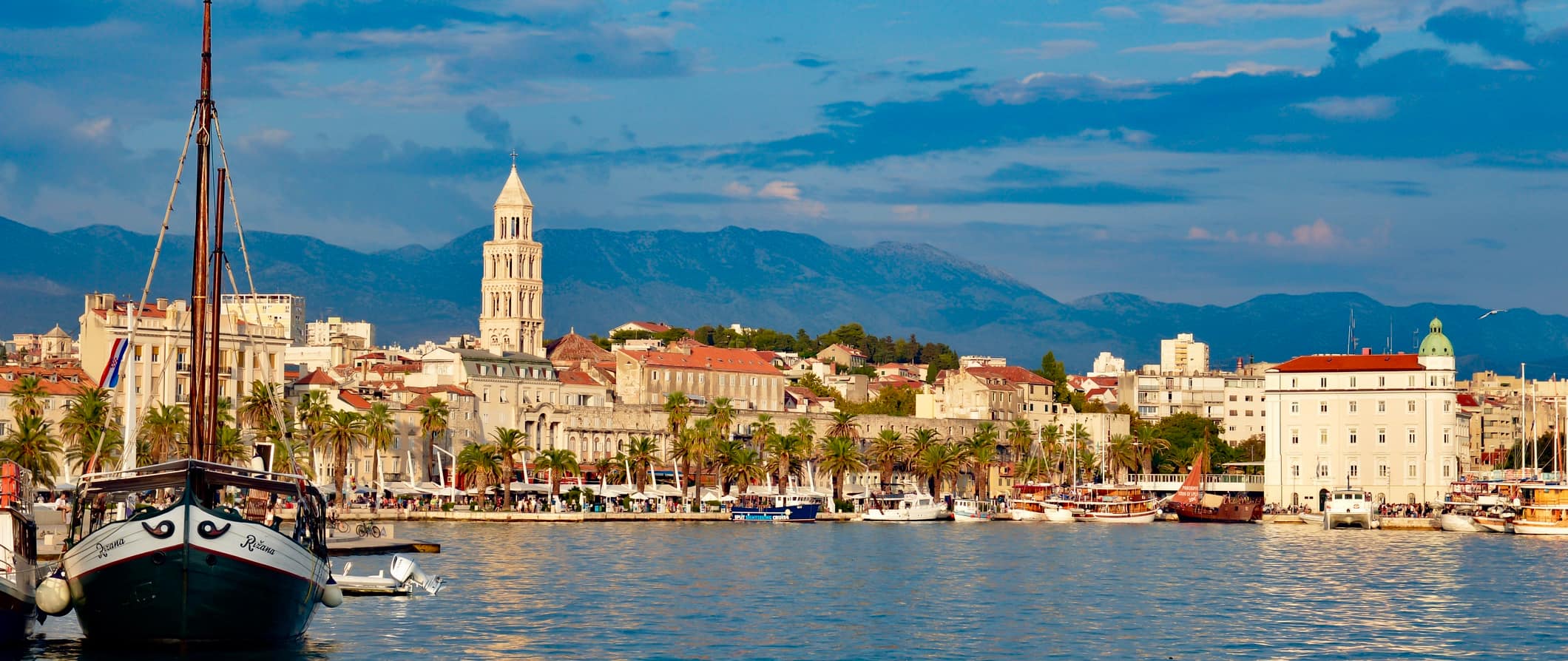
Public transportation – Public transportation is fairly inexpensive in Croatia, with most tickets costing between 0.53-2.50 EUR, depending on the distance you go. Both Dubrovnik and Split have day passes that cost around 4-5 EUR for a 24-hour pass and 10-12 EUR for a 72-hour pass. Buses and trams are the main ways to get around Croatia’s cities.
Bus – To get around the country, Flixbus or Arriva is the most budget-friendly option. Croatia has invested heavily in improving its roads in recent years and traveling by bus is fast, cheap, and comfortable. Most buses have free Wi-Fi, reclining seats, sockets, and AC. You can use Get By Bus for routes and pricing information.
The cross-country 4.5-hour trip from Dubrovnik to Split starts at 15 EUR on Flixbus in the low season and 20 EUR on Arriva. The 2.5-hour trip from Split to Zadar starts at 11 EUR in the low season. Split to Zagreb takes around 5 hours and costs 20-25 EUR. Rovinj to Pula takes just under an hour and costs 5 EUR, while Pula to Zagreb costs around 20 EUR and takes 4.5-5 hours.
Note that buses have a 1-2 EUR fee for checked bags.
To find bus routes and prices, use BusBud.
Train – The train lines in Croatia have been neglected in favor of improving the roads. Therefore, trains are slow and infrequent. They also don’t run along the Dalmatian coast, making them more or less useless for most travelers. I wouldn’t recommend the train here.
Ferry – Ferries in Croatia are efficient and affordable. Most ferries in Croatia are owned by the national carrier Jadrolinija and are large car ferries (so you can bring a vehicle). There is also a network of catamarans that link many of the smaller islands. Most smaller ferries start at 5 EUR during the low season and 10 EUR during the high season. Use Croatia Ferries for routes and prices.
For the 4.5-hour ferry between Dubrovnik and Split, expect to pay at least 38-50 EUR.
Flying – Croatia Airlines is the domestic carrier and offers flights between Zagreb and other airports within the country, including Dubrovnik, Split, Pula, and Zadar. Prices are relatively comparable between all the destinations, with one-way tickets starting at around 50 EUR.
Car rental – Car rentals start around 15 EUR per day. An International Driving Permit (IDP) is required before you can rent a car (it’s usually not enforced, but it’s better to be safe than sorry). For the best rental car prices, use Discover Cars.
Hitchhiking – Hitchhiking in Croatia is safe and you generally won’t have to wait long for a ride. Having a sign helps, and you’ll generally find more rides along the coast. Hitchwiki is the best website for more hitchhiking info.
When to Go to Croatia
The best time to visit Croatia is during the shoulder season between May-June or September-October. During these months, you can expect lovely weather and fewer crowds. This is also the perfect time for outdoor activities like hiking, boating, and kayaking. Expect temperatures around 22°C (71°F) on the coast. Further inland, temperatures are a little cooler during these times of year but still pleasant. You’re likely to encounter rain, so packing layers will keep you comfortable in the variable weather.
During the low season (November-April), the country is a lot cheaper, making it an affordable place to visit for anyone on a tight budget. However, many places (including hotels and restaurants) close for the winter due to the lack of tourists so your options are much more limited during this time. The Dalmatian Coast is rainy and inland cities, like Zagreb, even get some snow. Average high temperatures across the country are below 9°C (49°F) so you’ll definitely want to bring lots of warm layers. Daylight hours are short as well, so this isn’t the ideal time for outdoor activities.
During the peak season (July and August), expect to pay double what you would in the low season. Dubrovnik is especially busy (and expensive) during this time. The coastal resorts are packed with families and cruisers. Temperatures hover around 30°C (86°F) though so the weather is at its best. If you choose to visit during the busy summer months, you’ll still want to bring rain gear, especially if you’re visiting inland destinations.
Croatia Travel Guide: The Best Booking Resources
These are my favorite companies to use when I travel. They consistently have the best deals, offer world-class customer service and great value, and overall, are better than their competitors. They are the companies I use the most and are always the starting point in my search for travel deals.
- Skyscanner – Skyscanner is my favorite flight search engine. They search small websites and budget airlines that larger search sites tend to miss. They are hands down the number one place to start.
- Hostelworld – This is the best hostel accommodation site out there with the largest inventory, best search interface, and widest availability.
- Booking.com – The best all around booking site that constantly provides the cheapest and lowest rates. They have the widest selection of budget accommodation. In all my tests, they’ve always had the cheapest rates out of all the booking websites.
- HostelPass – This new card gives you up to 20% off hostels throughout Europe. It’s a great way to save money. They’re constantly adding new hostels too. I’ve always wanted something like this and glad it finallt exists.
- Get Your Guide – Get Your Guide is a huge online marketplace for tours and excursions. They have tons of tour options available in cities all around the world, including everything from cooking classes, walking tours, street art lessons, and more!
- The Man in Seat 61 – This website is the ultimate guide to train travel anywhere in the world. They have the most comprehensive information on routes, times, prices, and train conditions. If you are planning a long train journey or some epic train trip, consult this site.
- Trainline – When you’re ready to book your train tickets, use this site. It streamlines the process of booking trains around Europe.
- Rome2Rio – This website allows you to see how to get from point A to point B the best and cheapest way possible. It will give you all the bus, train, plane, or boat routes that can get you there as well as how much they cost.
- FlixBus – Flixbus has routes between 20 European countries with prices starting as low 5 EUR! Their buses include WiFi, electrical outlets, a free checked bag.
- SafetyWing – Safety Wing offers convenient and affordable plans tailored to digital nomads and long-term travelers. They have cheap monthly plans, great customer service, and an easy-to-use claims process that makes it perfect for those on the road.
- LifeStraw – My go-to company for reusable water bottles with built-in filters so you can ensure your drinking water is always clean and safe.
- Unbound Merino – They make lightweight, durable, easy-to-clean travel clothing.
- Top Travel Credit Cards – Points are the best way to cut down travel expenses. Here’s my favorite point earning credit cards so you can get free travel!
- BlaBlaCar – BlaBlaCar is a ridesharing website that lets you share rides with vetted local drivers by pitching in for gas. You simply request a seat, they approve, and off you go! It’s a cheaper and more interesting way to travel than by bus or train!
GO DEEPER: Nomadic Matt’s In-Depth Budget Guide to Europe!
There’s a lot of free information online but do you want to spend days searching for information? Prob not! That’s why guidebooks exist.
While I have a lot of free tips on Europe, I also wrote an entire book that goes into great detail on everything you need to plan a trip here on a budget! You’ll get suggested itineraries, budgets, even more ways to save money, my favorite restaurants, prices, practical information (i.e. phone numbers, websites, prices, safety advice, etc etc), and cultural tips.
I’ll give the insider view of Europe that I got from years of traveling and living here! The downloadable guide can be used on your Kindle, iPad, phone, or computer so you can have it with you when you go.
Click here to learn more about my book on Europe!
Croatia Travel Guide: Related Articles
Want more tips for your trip? Check out all the articles I’ve written on Croatia travel and continue planning your trip:

